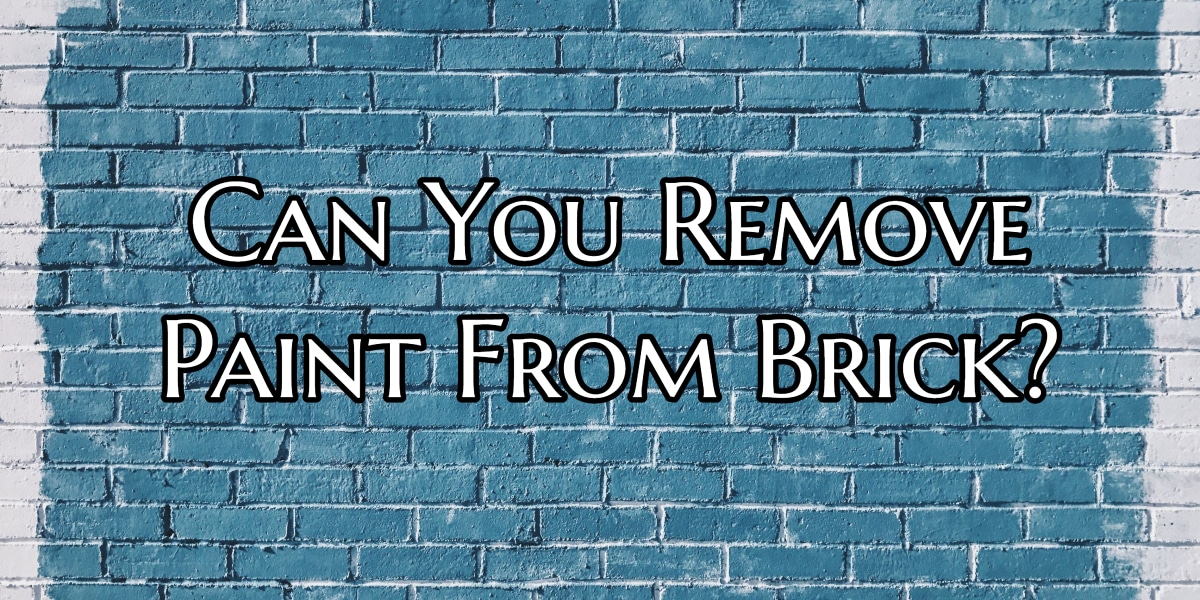Trends are constantly changing. While painted brick may have looked nice 10 years ago, it might be a little outdated by now, especially if it is chipped or peeling in areas.
If you prefer original brickwork, we have good news. Paint can be removed from bricks without damaging the masonry underneath. However, you will want to use specific materials, and set aside a weekend or longer to get the job done.
Here are the simple steps you can take to remove paint from both indoor and outdoor bricks.
Step 1: Gather the Right Materials
Brick is a porous material, which means simply scraping at the paint layer won’t do the trick. The paint has already sunk into the tiny holes and crevices in the stonework. Sandblasting might be tempting, but this harsh method will likely damage the bricks.
Instead, a caustic paint stripper will be necessary.
There are paint strippers available that are formulated especially for brick. While this type is most effective, it is not required. You will want to avoid strippers that contain the highly toxic chemical known as methylene chloride.
You will also need some protective gear, both for yourself and the surrounding areas. This includes a drop sheet, gloves, an expendable long-sleeve shirt, and eye protection. Finally, you will need a stiff-bristled brush and a putty knife.
Step 2: Clean the Walls
You want the paint stripper to stick directly to the paint. Dirt and debris can get in the way, and you’ll end up removing these surface-level imperfections instead.
For the best results, clean the area you intend to strip. For outdoor bricks, such as exterior walls or paver paths, use a hose in close proximity. For indoor bricks, such as fireplaces, use a wet washcloth.
Step 3: Test the Stripper
Not all chemicals react the same way when they meet. You can test the stripper by applying it to a small, unnoticeable section. This can be in a corner, or behind bushes and decor items.
If you don’t know the origin of the paint, you should also test it for lead with a DIY kit. This is especially important if you suspect it was applied prior to the 1980’s, when lead paint was still widely in use.
If the paint contains lead, do not sand, chip, or scrape it. This can cause lead particles to become airborne, where they are even more dangerous. You may need to call the professionals if your paint contains lead, or simply add another layer of paint on top.
Step 4: Apply in Small Sections
Now that your tests have proven the stripper and paint are both safe, it’s time to get to work. While it is a relatively easy process, note that removing paint from brick is laborious and time-consuming. Make sure you have enough time, especially for bigger projects like a whole house.
Apply the stripper in small sections that match the size of your sheets. This is typically between 3 square feet and 5 square feet, although sizes can vary. You will mainly want to ensure that the stripper does not dry before the sheet is applied.
Apply the stripper generously and evenly with a putty knife. A thicker layer is better than a thin one, so aim for about half an inch.
Step 5: Cover Sections With Plastic Sheets
As you finish applying the paint stripper, cover the section with plastic sheets immediately. You may need to cut your sheets into smaller pieces for convenience.
The sheets will need to sit for at least 30 minutes and at most 12 hours. Check the specific directions on your paint stripper for the most accurate waiting times.
Afterward, remove the sheets carefully. You may notice the paint peeling away along with the stripper, or you might not. If you don’t, know that the bonding of the paint is weaker, and it will be easy to remove with a little scraping.
Step 6: Scrape and Clean
Next, grab a stiff-bristled brush and get scrubbing. Any sections of remaining paint will need to be removed manually. However, if you have a lot of paint left over, or you didn’t wait long enough, a second application may be necessary.
Once all the paint is finally removed, use a hose or wet washcloth once again to clean the newly exposed brick.
In some cases, the brick was originally painted in order to seal moisture or conceal imperfections. For a flawless restoration, additional projects might be necessary. This includes addressing moisture issues and correcting damaged bricks with help from a professional mason.
Professional Painting Services in Metro Detroit
Brick is a classic component of home design, but it can often appear outdated, damaged, and simply out of place. For professional painting services in metro Detroit, call Armor Tough Coatings!
Since 2014, we have built a reputation for fast, friendly, and experienced services. We provide interior painting for residential homes, as well as commercial and industrial buildings.
Allow us to cover those old bricks and give your space a brand-new look. Call now to learn more.










